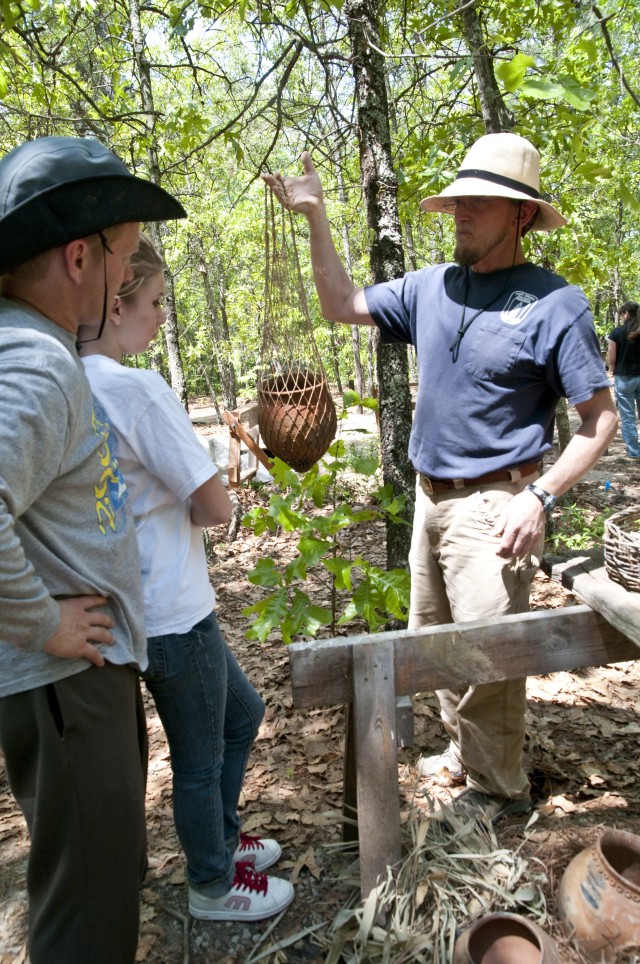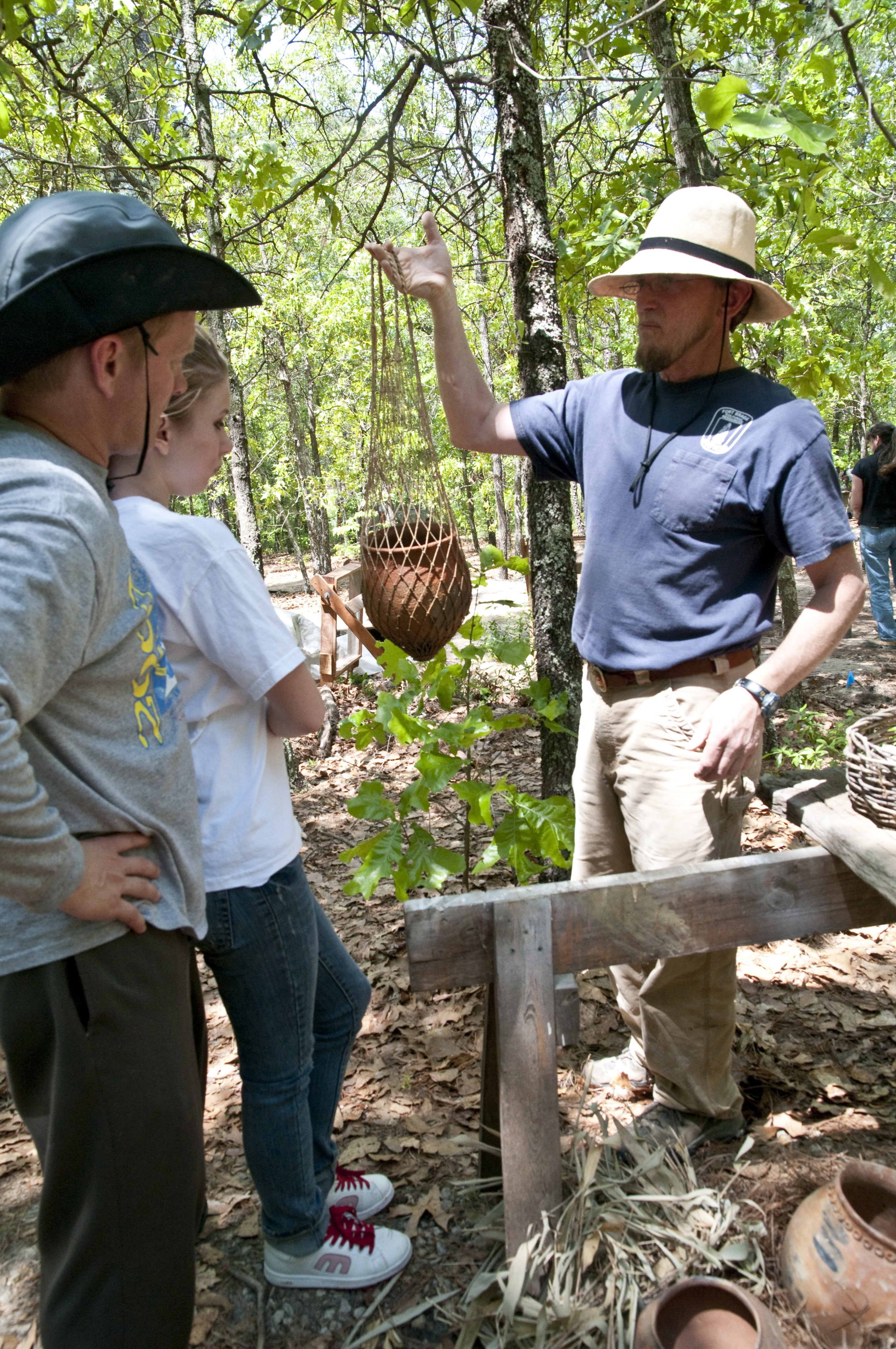
FORT BRAGG, N.C. - Fort Bragg Soldiers, Family members and civilians got their hands dirty this Earth Day at McFadyen Pond near Butner Road.
The Fort Bragg Cultural Resources Management Program opened a pre-contact archaeology site for public viewing from from mid- to late-April.
Visitors watched archaeologists and volunteers dig very precise squares into the soil where they would sift each layer of dirt for artifacts. Pieces of clay pottery and small shards of quartz and rhyolite spear points were found in this area overlooking the pond, many dating to the Woodland Period, from 1000 B.C. to 1500 A.D.
Dr. Linda F. Carnes-McNaughton, curator and archaeologist with the Fort Bragg Directorate of Public Works Cultural Resources Management Program, felt a day in nature, observing how archaeologists work in the field was a perfect activity for Earth Day.
"It is getting away from your computers, your telephones and out here on the earth to see, touch and sense these resources that are (at McFadyen Pond.) It's a way of getting closer to the sustainability of the past and what we can do with that in the future is understanding these resources a little better."
Demonstrations such as cooking with clay pots, making pottery and throwing spears gave visitors a sense of how these early settlers of modern day Fort Bragg lived, ate and hunted. Dr. Joseph Herbert, an archaeologist with the DPW Cultural Resources Program, showed visitors how clay pots for cooking were most likely made, by rolling coils of clay and pressing them together to form a pot.
Desmond Byrd, 14, seemed impressed with the presentation. "It's really cool that he's making them in the same way they were made hundreds of years ago," she said. Desmond was with her sister, Brittain, 9, and her father, Eric Hoffman, a biologist for the Fort Bragg DPW, Environmental Division.
"Today is Bring Your Child To Work day. I thought this would be an excellent opportunity for my children to see," said Hoffman.
Byrd and Noah Heath,10, son of Charles Heath, an archaeologist with the DPW Cultural Resources Program, took turns using an atlatl, a tool that uses leverage to throw spears with greater speed and distance.
As everyone watched the spears fly further and further, the distant roar of traffic became harder and harder to hear. The visitors, volunteers and archaeologists at McFayden Pond were not only away from their busy lives, they may have gone back into the past. At least it felt that way.

Social Sharing